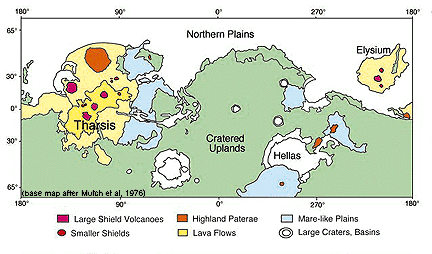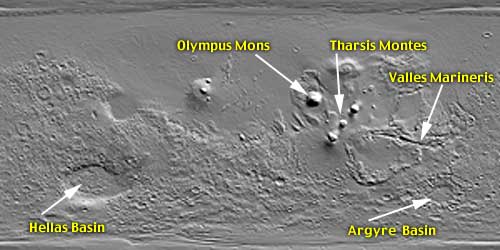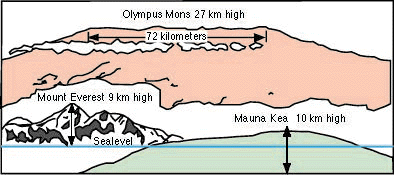Volcanism on Mars
Mars has one single Plate (no `tectonics'), but has two distinct terrains: The Northern plains and the Southern Highlands. An enormous escarpment several km high separates them. The Southern Highlands are rough, highly cratered and old (>3 b.y.o.). The North is much younger, with extensive resurfacing (1 b.y.o., and possibly younger in spots). (Movie)

|

|

Why are the volcanoes so large?
1) Lack of erosion (water or air), 2) No motion of
plates combined with a long lived mantle hotspot and 3) Low GRAVITY.. about 1/3 of
Earth's gravity. 4) The crust on Mars is extremely thick. A volcano the size of Olympus
Mons would sag to a lower altitude on Earth's thin crust!
The lack of erosion helps in sorting out the geological history. It shows that volcanism has been extensive through out Mars' history. Some volcanoes are several b.y.o. Yet, it has also been active fairly recently. Some of the youngest lava flows on Olympus Mons are thought to be as young as a few hundred million years. The main structure of the volcano may have existed for billions of years. It's not known if volcanism is presently still active or not on Mars.